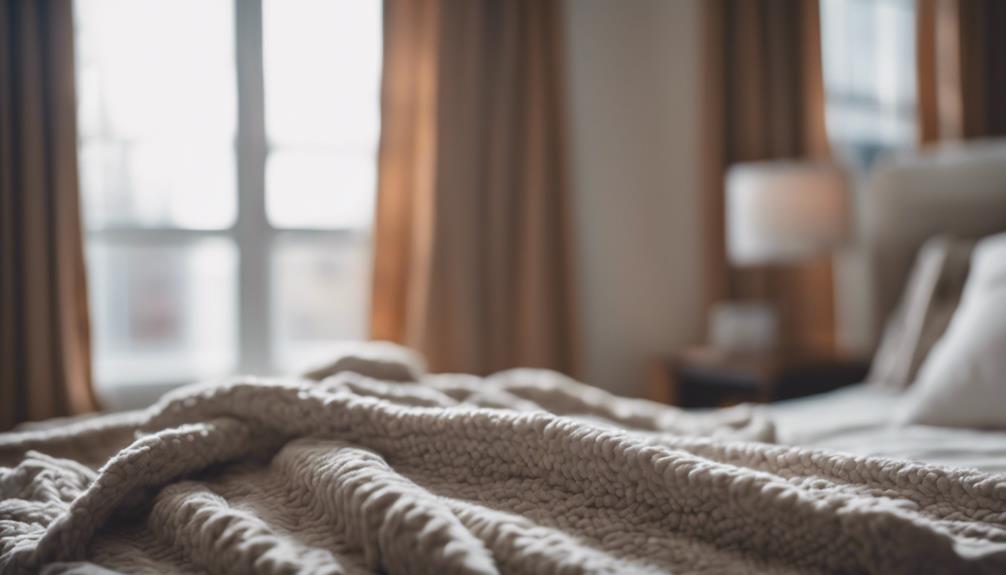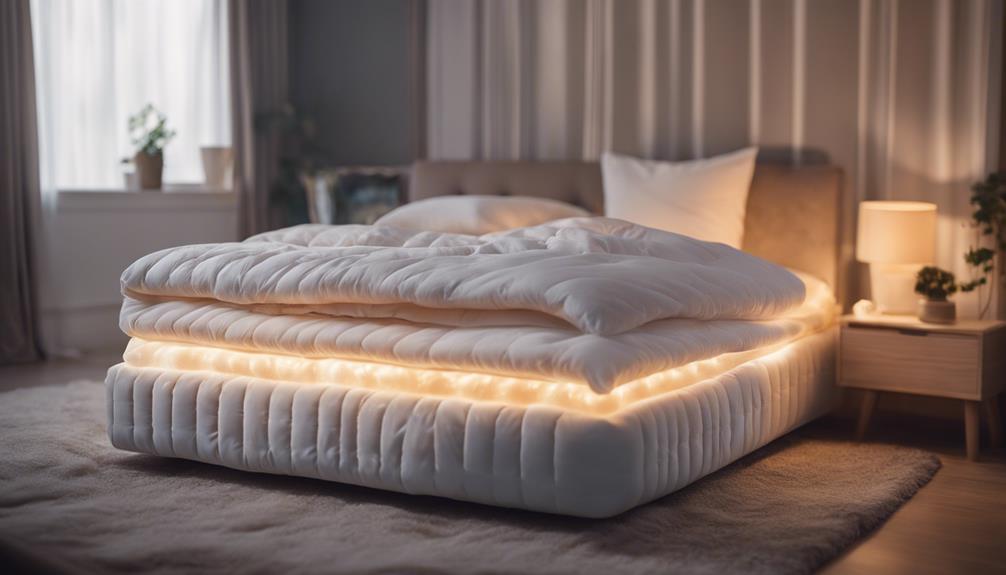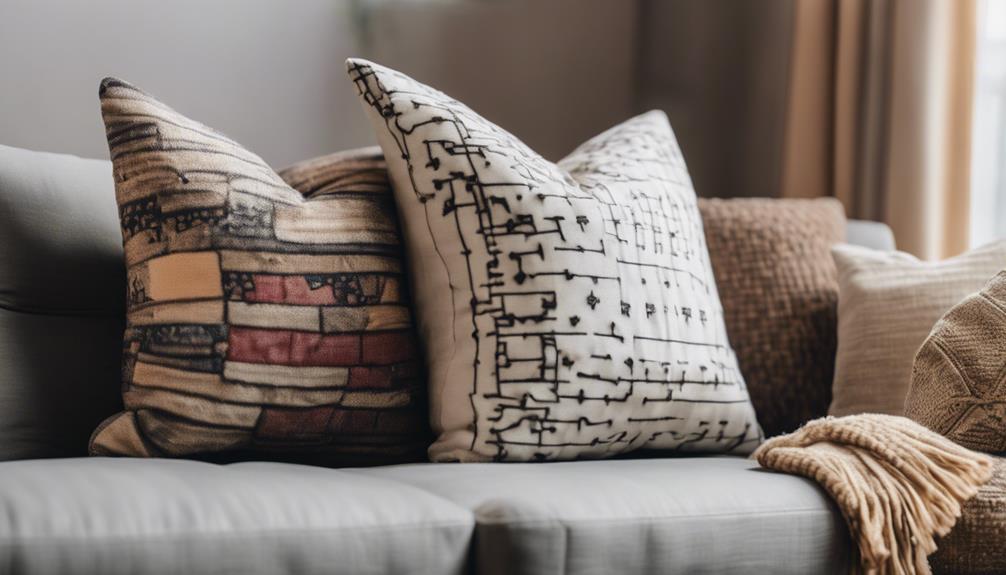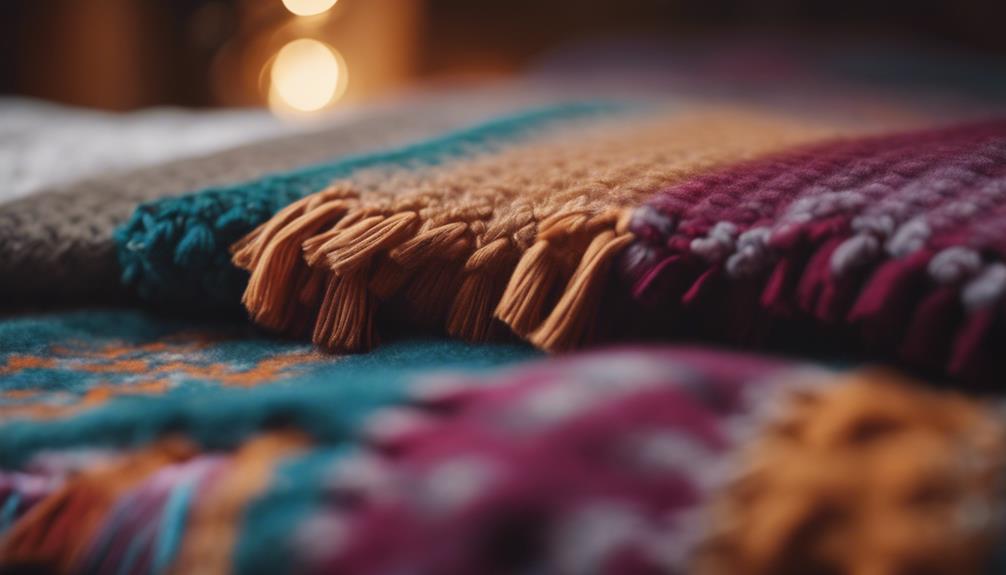For a full-sized blanket, you will typically need around 11.5 yards of 48-inch wide fabric or 8.5 yards if it is 54 inches wide. The total yardage required will vary depending on dimensions, fabric width, and design elements such as borders or intricate patterns. When planning a blanket project, it is crucial to consider factors like yarn weight and desired dimensions. Having a good understanding of these elements will help you accurately estimate the right amount of fabric needed. Keep in mind that thicker yarns will require fewer yards compared to finer options, so be sure to adjust your yardage estimates accordingly. Further information on fabric calculations and adjustments can be beneficial in ensuring successful blanket making.
Key Takeaways
- A full-sized blanket typically requires around 11.5 yards of 48-inch wide fabric.
- For 54-inch wide fabric, approximately 8.5 yards may be needed.
- Yarn weight and blanket size significantly influence the yardage needed.
- Consultation with a decorator or yardage chart aids in accurate estimation.
- Overestimate yardage for flexibility and to accommodate unforeseen issues.
Average Yardage for Full-Sized Blankets
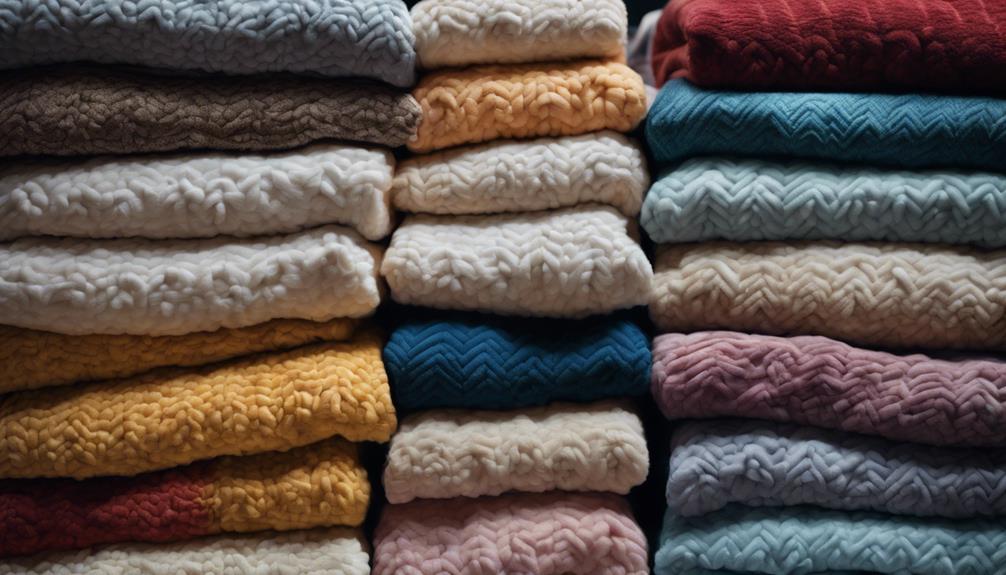
On average, a full-sized blanket typically requires around 11.5 yards of fabric that's 48 inches wide, or 8.5 yards if the fabric is 54 inches wide.
When determining the accurate amount of yarn needed to make a full blanket, it's important to take into account the dimensions of the finished product and the type of material being used.
The width of the fabric plays a significant role in calculating the yardage required for the blanket. Making sure that the correct amount of fabric is purchased is vital to avoid running out in the middle of the project.
Using a yardage chart or consulting a decorator can assist in accurately estimating the yardage needed for your specific full-sized blanket project.
Factors Affecting Yardage Requirements

When calculating yardage requirements for a full blanket, factors such as the blanket size and the weight of the yarn play an important role. Understanding these elements can help determine the accurate amount of fabric needed for your project.
It's essential to take these points into account carefully to make sure you have the right yardage for your full blanket creation.
Blanket Size Considerations
Considering various factors like fabric type, desired dimensions, and design elements, determining the yardage needed for a full blanket is essential for a successful project. The yardage required can vary based on the size of the blanket, additional design features, and the type of fabric chosen. Here is a table to illustrate how different dimensions can affect the yardage needed for a standard 54-inch wide fabric:
| Blanket Size | Dimensions | Approx. Yardage Needed |
|---|---|---|
| Standard | 80×90 inches | 10-12 yards |
| Larger | 90×100 inches | 12-14 yards |
| Custom | Custom dimensions | Varies based on size |
Yarn Weight Influence
Exploring how yarn weight influences the yardage requirements for a full blanket sheds light on key considerations for achieving the desired outcome. The weight of the yarn you choose has a big impact on the amount of yarn you'll need.
Lighter yarn weights often demand more yardage due to denser stitches, while medium-weight yarns offer a balanced option. Bulky or super bulky yarns can decrease the overall yardage required, making them perfect for quick and cozy projects.
When selecting the yarn weight for your blanket, consider factors like drape, warmth, and texture to guarantee the desired look and feel. Swatching with different yarn weights can help determine the best amount needed based on the chosen stitch pattern and gauge.
For more information, please contact us for personalized guidance.
Yardage Estimates for Different Yarn Weights
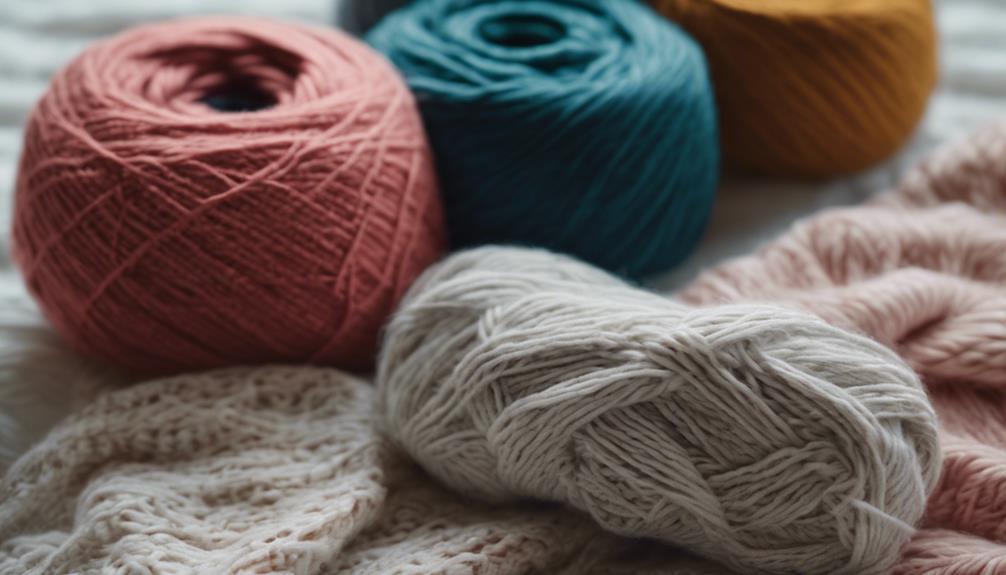
When estimating yardage for different yarn weights, we consider the categories of yarn weight and the yards required per yarn type. Understanding these factors helps determine how much yarn is needed for a full blanket project.
Yarn Weight Categories
The yardage estimates for different yarn weights play an essential role in determining the amount of yarn needed for a full blanket. Lighter yarn weights such as lace or super fine often require more yardage due to their thinness, while bulky or super bulky yarns generally need less for a similar size blanket.
For instance, worsted weight yarn, a popular choice for blankets, typically necessitates around 1000-2000 yards for a full-sized blanket. Crocheting with a medium weight yarn may require 1500-2500 yards, but opting for a bulky yarn can reduce the yardage needed.
When planning your blanket project, it's important to take into account factors like stitch density, desired drape, and intended warmth level to estimate the appropriate amount of yarn accurately.
Yards per Yarn Type
Understanding the yardage estimates for different yarn weights is crucial when planning for a full blanket project. Thicker yarn weights like bulky or super bulky generally require fewer total yards compared to finer yarn weights such as lace or super fine.
For a bulky yarn, you might need around 800-1000 yards for a full blanket, while a lace-weight yarn could require 2000 yards or more to achieve the same size. These variations stem from the thickness of the yarn strands and how tightly or loosely they're spun.
When selecting yarn for your blanket, consider not only the weight but also the yardage to make sure you have enough for your desired project size.
Yardage Calculation for Large Blankets
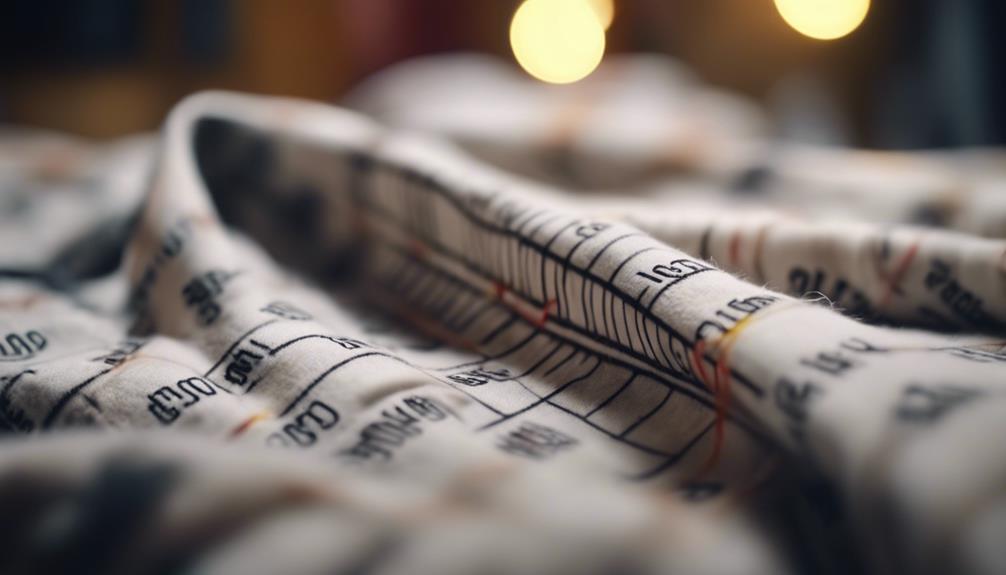
Calculating yardage for large blankets becomes important to guarantee sufficient fabric for proper coverage and drape. When determining the yardage needed for a full blanket, consider the standard sizing for a full (double) bed measuring 54 x 75 inches. Here are some key points to keep in mind:
- A full blanket typically requires around 11.5 yards of fabric that's 48 inches wide.
- For a full blanket that's 54 inches wide, the yardage needed may be around 8.5 yards.
- The estimates are based on ensuring ample fabric for a full blanket with proper coverage and drape.
- Your desired style and design elements play a role in determining the exact yardage needed for a full blanket.
- The yardage calculation is important to avoid running short on fabric and to achieve the desired look and functionality in your large blanket project.
Considering these factors will help you accurately calculate the yardage required for your large blanket project.
Adjusting Yardage for Intricate Patterns
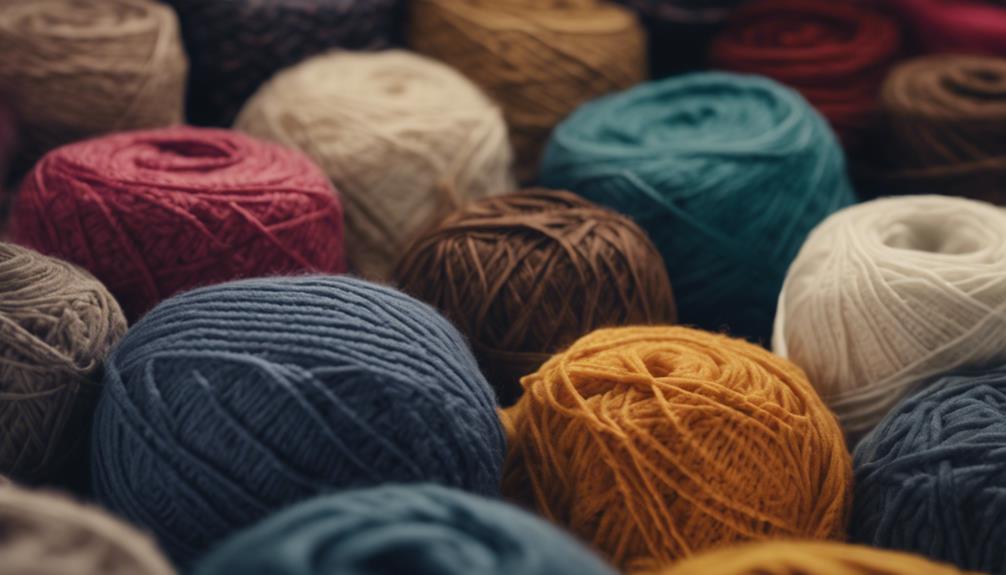
When tackling intricate crochet patterns, adjusting the yardage estimate becomes essential due to the complexity and density of stitches involved. Intricate designs with detailed motifs or textures often require more yarn than simpler patterns due to the increased number of stitches. Factors such as color changes, stitch variations, and combinations can greatly impact the overall yardage needed for the project. It's important to take into account the intricacy of the pattern and the recommended yarn weight to accurately calculate the required yardage for completing the project successfully.
To make sure that there's enough yarn for intricate patterns, it's advisable to purchase extra yardage as a buffer. This precaution helps prevent the inconvenience of running out of yarn before finishing the project. By adjusting the yardage estimate based on the intricacy of the pattern and considering all the factors that affect yarn usage, crocheters can tackle intricate projects with confidence, knowing they've adequately prepared for the task at hand.
Importance of Checking Pattern Requirements
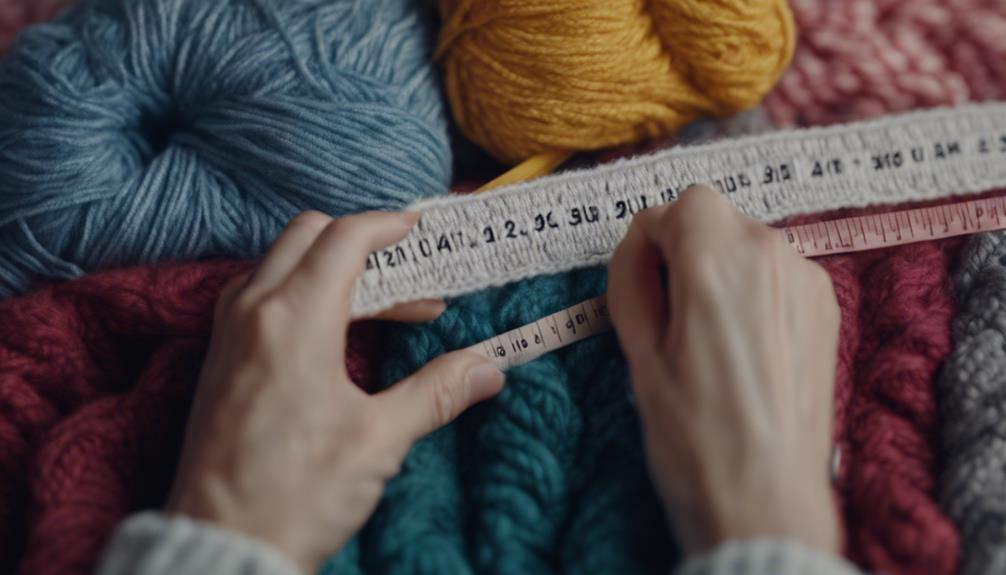
To guarantee a successful outcome for your crochet project, it's essential to carefully review the pattern requirements. Checking the pattern details is vital to determine the exact amount of yarn needed for a full blanket project. Patterns specify key elements such as yarn weight, stitch pattern, and project size, all of which influence the yardage required.
Crochet projects typically use more yarn than knitting due to denser stitches, impacting the overall yardage needed for completion. Additionally, larger sizes or intricate patterns for full blankets may necessitate additional yarn to make sure the project reaches its intended size.
It's always advisable to buy extra yarn to prevent the frustration of running out mid-project, ultimately securing a successful and satisfying outcome.
- Review pattern details thoroughly.
- Consider yarn weight and stitch pattern.
- Factor in project size for accurate yardage estimation.
- Account for the denser nature of crochet stitches.
- Purchase extra yarn to avoid running out prematurely.
Tips for Buying Sufficient Yarn
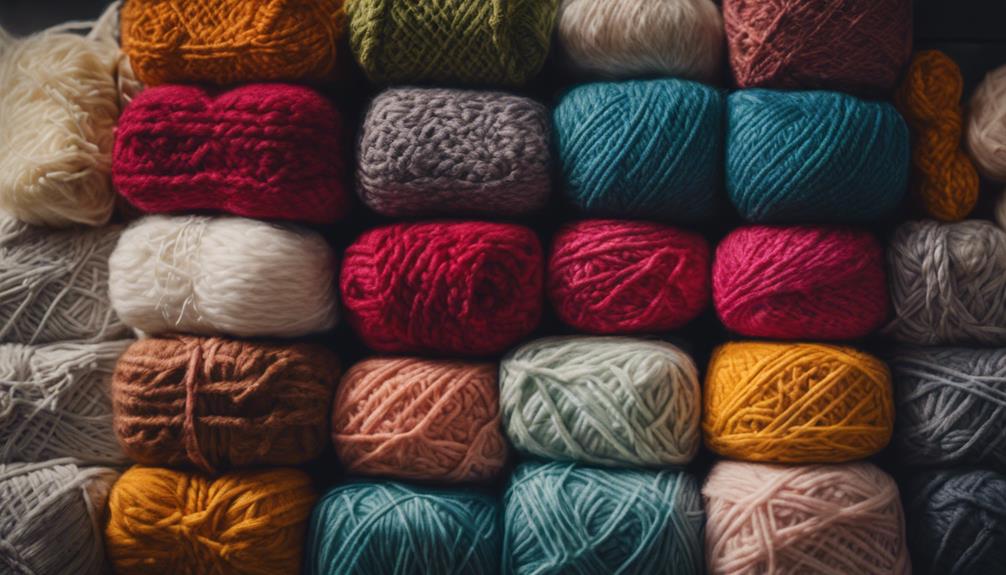
Let's guarantee we purchase enough yarn by considering the size and weight needed for the full blanket project. When aiming to make a full blanket, dimensions can range from 72×84 inches to 80×90 inches. To make certain you have the right amount of yarn, calculate the total yardage by multiplying the length and width of the blanket in yards. Don't forget to add a little extra for borders or intricate patterns.
For a standard 80×90 inches full blanket, you might require around 11 to 14 yards of yarn, depending on the stitch and yarn weight chosen. Remember, the yarn weight plays an important role too. Heavier weights need less yardage compared to lighter ones for the same blanket size. It's wise to purchase slightly more yarn than your calculated amount to prevent running out before the project is complete.
Preventing Yarn Shortages in Projects
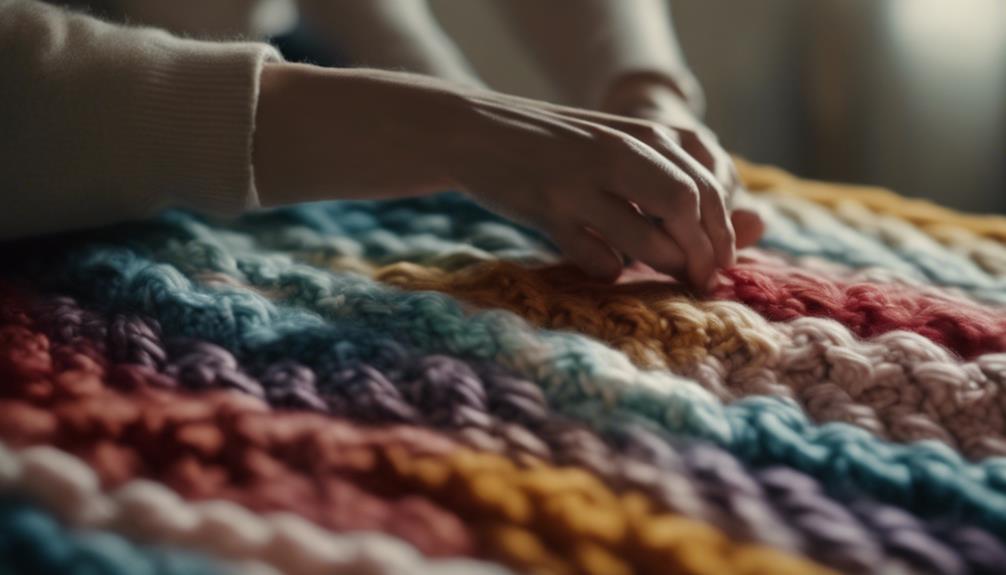
Considering the stitch pattern, yarn weight, and gauge is crucial for accurately estimating the yarn requirements to avoid yarn shortages in full blanket projects. Different stitch patterns and yarn weights can greatly impact how much yarn is needed to complete a blanket project successfully.
To prevent yarn shortages in your projects, follow these tips:
- Calculate the total yards needed for a full blanket based on the desired dimensions and type of blanket style.
- Factor in any additional design elements like borders or edging that may increase the overall yardage needed for the full blanket.
- Always buy extra yarn to prevent shortages, especially for larger projects like a full blanket where running out of yarn can disrupt the continuity of the project.
- Consult yarn weight conversion charts and project guidelines to make sure you have adequate yarn supply for completing a full blanket without interruptions.
- Consider the stitch pattern, yarn weight, and gauge to accurately estimate the yarn requirements for a full blanket project.
Overestimating Yardage for Safety
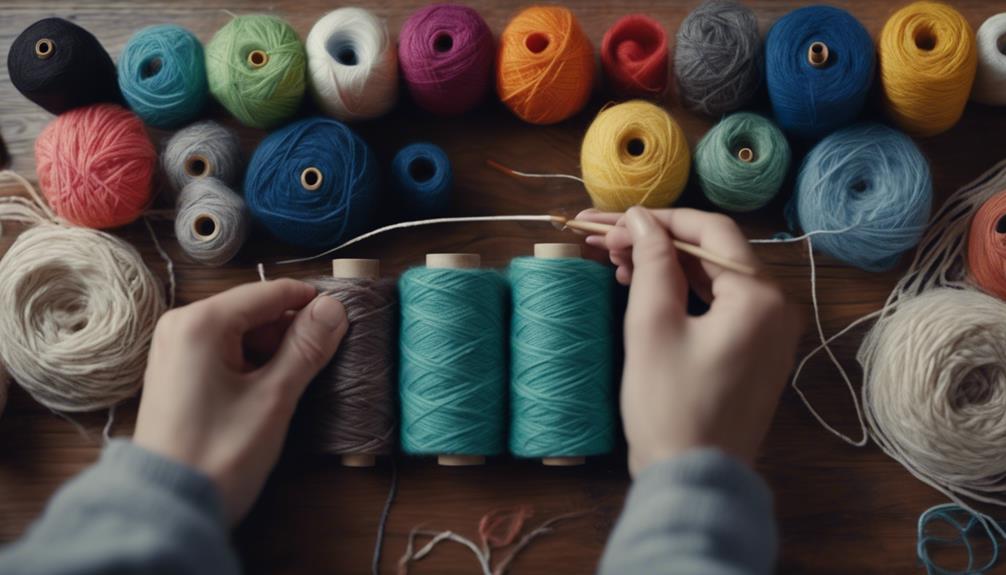
Overestimating yardage for a full blanket guarantees we've enough fabric to complete the project without running out. By adding extra yardage for errors, pattern matching, and unforeseen issues during sewing, we prepare for any challenges that may arise. This additional fabric also allows for adjustments in cutting and sewing to achieve the desired look and fit. Fabric behavior, such as shrinking or stretching during washing and sewing, underscores the importance of having surplus yardage to accommodate these changes. While the estimated yardage may seem excessive, it's prudent to have more fabric than required to avoid falling short in the middle of the project.
Ensuring we overestimate the yardage for a full blanket serves as a safety net, offering peace of mind and flexibility throughout the sewing process. It's a practical approach that minimizes the risk of running out of fabric and helps us navigate unexpected hurdles with ease. Embracing a mindset of overestimation can lead to a smoother and more successful blanket-making experience.
Frequently Asked Questions
Is 2 Yards of Fabric Enough for a Blanket?
Two yards of fabric mightn't be sufficient for a full blanket, considering standard sizes ranging from 80×90 to 96×110 inches.
The yardage required varies based on dimensions and any added features like trims. For instance, a blanket of 81×110 inches would require more fabric to account for seams and hems.
To guarantee adequacy, calculate the total yardage needed based on your project's specific measurements using a fabric yardage calculator or sewing guide.
How Much Fabric Do I Need for a Full-Size Quilt?
We typically recommend around 7 to 9 yards of fabric for a full-size quilt, depending on the design complexity. A basic quilt might require about 7 yards, while more intricate patterns could need up to 9 yards.
It's wise to buy a bit extra to cover mistakes and pattern matching. The fabric choice is essential for achieving the desired look and feel of the finished quilt.
How Many Yards of Fabric Do I Need for a Full Size Comforter?
When making a full-size comforter, around 11.5 yards of fabric are typically needed, factoring in standard measurements. It's important to take into account the desired drop length and style, as these can slightly alter the required yardage.
For precise estimates, consulting with a decorator or workroom is recommended. To avoid running short, it's wise to order extra fabric for potential errors and pattern matching.
Our yardage chart serves as a helpful guide for planning a full-size comforter.
How Big Is a 2 Yard Blanket?
A 2-yard blanket can vary in size depending on the fabric width but generally measures around 72 inches by 72 inches for a square blanket or 72 inches by 45 inches for a rectangular one.
It's a versatile size suitable for throws, lap blankets, or smaller bedding pieces. Consider desired dimensions and extra fabric for hems.
Our experience suggests that a 2-yard blanket is a practical choice for various cozy purposes.
What is the Standard Size of a Full Blanket in Yards?
The standard size of a full blanket is typically around 2 yards in length and width. When sizing a 2 yard blanket, you can expect it to cover a standard full-sized bed with some extra overhang. This size is great for keeping you warm and cozy during the colder months.
Conclusion
To sum up, calculating the yardage needed for a full-sized blanket requires careful consideration of various factors such as yarn weight, pattern complexity, and personal preferences.
By estimating yardage accurately, purchasing sufficient yarn, and adjusting for potential shortages, crafters can guarantee a successful and stress-free project.
Remember, it's always better to have a little extra yarn on hand than to run out mid-project.
Happy crafting!
